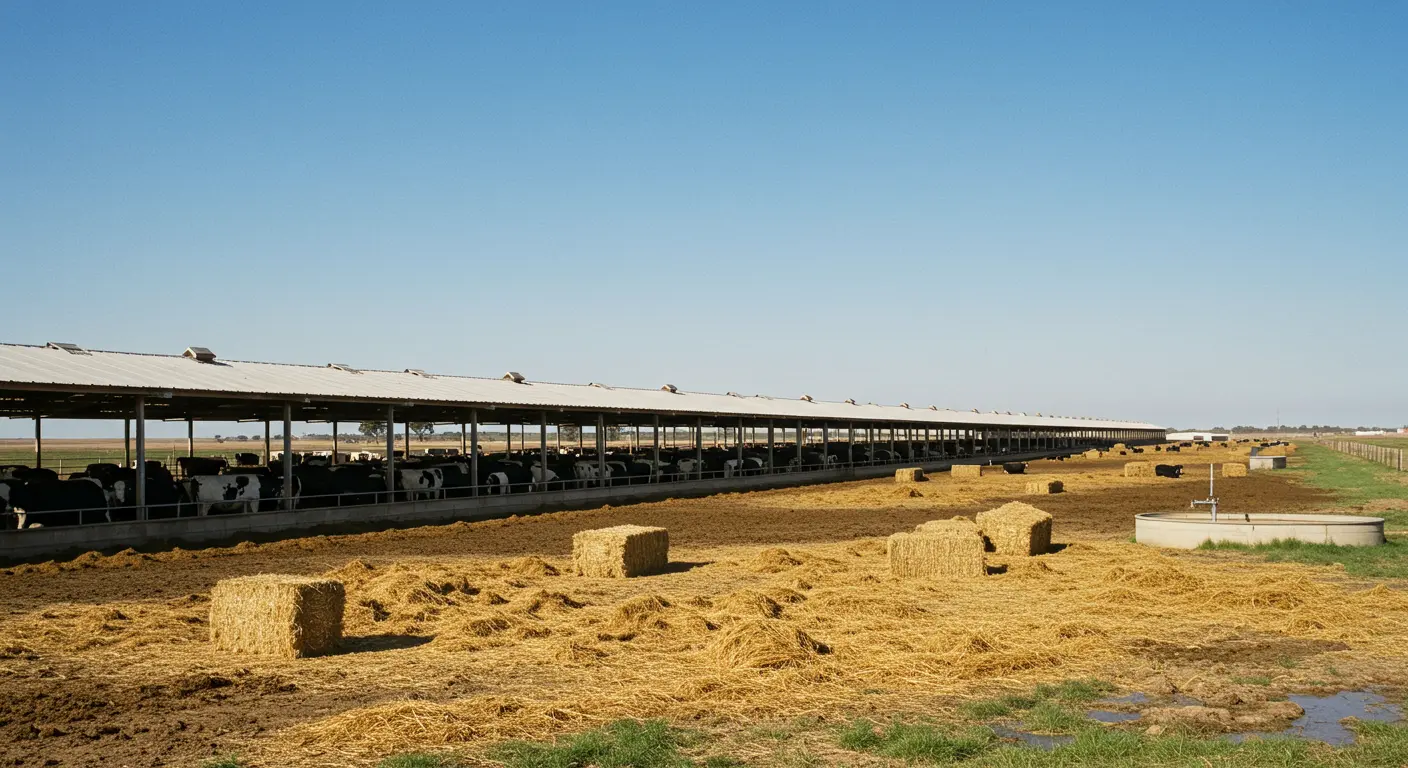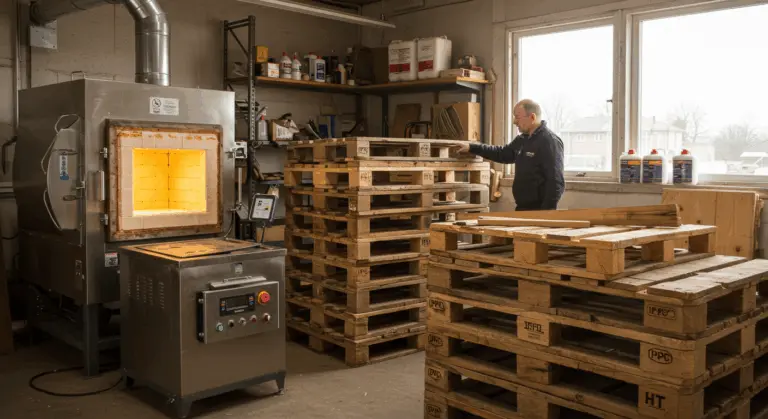What is a CAFE? – Definition and Overview
A Concentrated Animal Feeding Operation (CAFE) is a large-scale industrial facility where animals remain confined rather than grazing freely on pastures. According to the U.S. Department of Agriculture (USDA), a CAFE confines over 1,000 animal units—with one unit equaling approximately 1,000 pounds of live weight—for more than 45 days annually.
These facilities maximize production efficiency while minimizing land use, these sprawling operations house thousands of animals. Cattle, pigs, and poultry live within confined structures where feed arrives directly to them, eliminating the need for traditional grazing.
Cafes represent a subset of Animal Feeding Operations (Amos), distinguished primarily by their massive scale. This distinction matters because Cafes face stricter regulations precisely because their size amplifies their potential for environmental damage.
The scale of these facilities creates significant challenges that are the focus of public and regulatory debate, including:
-
Waste management
-
Environmental impact
-
Animal welfare
-
Public health
Environmental Impact of Cafes – Key Concerns
The environmental footprint of Cafes stretches far beyond their physical boundaries, creating ripple effects across entire ecosystems. For perspective, a single large operation generates as much animal waste as a small city. When mismanaged, this waste becomes a significant environmental hazard.
Air quality deterioration presents another critical concern. Cafes release substantial quantities of harmful pollutants, including ammonia, hydrogen sulfide, and methane—a greenhouse gas 25 times more potent than carbon dioxide. Most concerning is the particulate matter containing antibiotic-resistant bacteria that these facilities discharge into the atmosphere.
These impacts trigger a cascade effect throughout natural systems. Nutrient cycles become disrupted. Biodiversity suffers. Water quality degrades, and atmospheric composition shifts. As Cafes continue expanding, addressing these environmental challenges becomes increasingly urgent.
Regulations Governing Cafes – Compliance and Oversight
Concentrated Animal Feeding Operations face complex, multi-layered regulations designed to mitigate their environmental and public health impacts. Federal, state, and local agencies share oversight responsibilities, creating an intricate compliance landscape that operators must navigate.
At the federal level, the Environmental Protection Agency (EPA) regulates Cafes primarily through the Clean Water Act’s National Pollutant Discharge Elimination System (NODES) permit program. These permits establish specific requirements for waste management, including detailed nutrient management plans that detail waste handling, storage, and disposal. While the Clean Air Act offers mechanisms for regulating airborne emissions, implementation remains historically challenging.
State environmental agencies serve as primary regulators, often administering federal NODES programs while layering on state-specific requirements. These might include more stringent setback distances from water bodies, enhanced monitoring protocols, or specific construction standards for waste storage structures. States with high CAFE concentrations—like Iowa and North Carolina—have developed particularly specialized regulatory approaches.
Local governments add another regulatory layer through zoning ordinances, building codes, and health regulations that influence facility siting and operational practices.
Best management practices (BMPs) form the compliance foundation, divided into two essential categories: technological solutions—such as advanced manure treatment, covered storage facilities, and precision application equipment—and operational practices, including buffer zones, timing restrictions for manure application, and comprehensive record-keeping.
Significant oversight challenges remain. Limited agency resources constrain inspection and enforcement capabilities. Jurisdictional complexities between government levels create regulatory gaps. Meanwhile, our evolving scientific understanding of environmental impacts continues to outpace existing frameworks. These persistent issues fuel ongoing debates about regulatory effectiveness and intensify calls for stronger, more transparent oversight.
Public Health Concerns Related to Cafes
The concentrated nature of Cafes creates substantial public health risks that extend well beyond facility boundaries, affecting both neighboring communities and the broader public through multiple exposure pathways.
Water contamination poses the most immediate threat. Massive volumes of animal waste can infiltrate water sources, introducing dangerous pathogens like E. Cold and Guardian that cause severe gastrointestinal illnesses. Even more troubling, The antibiotics present in this waste contribute to developing antibiotic-resistant bacteria—a mounting global health crisis.
Air quality degradation from pollutants like ammonia and hydrogen sulfide creates additional health hazards. Respiratory issues plague nearby residents, who frequently report chronic coughing, wheezing, and worsened asthma symptoms. Workers face even greater risks, developing occupational diseases like chronic bronchitis. Beyond physical symptoms, persistent, pungent odors inflict psychological effects—causing stress, anxiety, and sleep disturbances throughout neighboring communities.
Vector-borne disease transmission represents another significant public health threat. The nutrient-rich environment surrounding animal waste creates ideal breeding grounds for flies, mosquitoes, and other disease-carrying insects. These vectors transport pathogens from Cafes to surrounding areas, potentially spreading diseases like West Nile virus and various bacterial infections.
Environmental justice concerns add another troubling dimension to Correlated public health issues. Research consistently shows these facilities cluster disproportionately in low-income communities and communities of color—areas that often lack the political and economic resources to advocate effectively for stronger protections. This unequal distribution of environmental burdens raises critical questions about equity in public health policy and regulatory enforcement surrounding industrial animal agriculture.
Animal Welfare Issues in Cafes – Ethical Considerations
The ethical implications of Concentrated Animal Feeding Operations reach far beyond environmental and public health concerns, challenging our fundamental moral obligations toward the animals trapped within these industrial systems. The numbers are staggering: over 10 billion animals in the U.S. live in Cafes, experiencing conditions that many animal welfare experts and ethicists condemn as fundamentally inhumane.
Space restriction represents the most visible welfare concern. Animals endure crowded environments that completely prevent natural behaviors—chickens cannot spread their wings, pigs cannot turn around, and cattle have minimal room to move. This severe confinement causes both physical and psychological distress, while high stocking densities create persistently unsanitary conditions.
Physical alterations—often performed without pain relief—constitute another major welfare violation. Common practices include tail docking in pigs, beak trimming in chickens, and dehorning in cattle. Additionally, selective breeding for rapid growth frequently leads to chronic health problems like lameness and heart failure.
The barren, unstimulating environments inflict severe psychological distress by preventing intelligent, social animals from performing natural behaviors like foraging, nesting, or socializing. This behavioral deprivation manifests in stereotypic behaviors—abnormal, repetitive actions such as bar-biting in pigs and feather-pecking in chickens. These behaviors signal severe psychological stress.
These profound welfare concerns have ignited ethical debates about CAFE justifiability, fueling consumer demand for more humanely raised products and prompting some producers to adopt improved welfare practices or explore alternative systems entirely.
Conclusion – The Future of Cafes in Agriculture
Concentrated Animal Feeding Operations (Cafes) face a critical turning point in modern agriculture. While they remain a dominant force in food production, their future trajectory is being reshaped by mounting public concern over their environmental, health, and ethical impacts.
The regulatory landscape governing Cafes will probably change significantly in coming years. Current regulations already impose stricter requirements on these operations compared to smaller facilities, particularly regarding waste management and pollution prevention. As scientific understanding of their environmental impact deepens, regulatory frameworks will become more comprehensive—potentially addressing greenhouse gas emissions, antibiotic use, and more rigorous waste treatment standards.
Technological innovation provides ways to reduce these impacts. Advanced waste treatment systems, precision feeding technologies that reduce nutrient excretion, improved facility designs enhancing animal welfare, and methane capture systems converting waste into energy represent key advances reshaping the industry.
Market forces are simultaneously driving change from another direction. Growing consumer demand for products meeting higher animal welfare standards and smaller environmental footprints is encouraging operators to embrace more sustainable or alternative production models.
We may see greater integration of Cafes into broader agricultural ecosystems. Rather than functioning as isolated production units, these facilities could evolve into components of circular agricultural economies. Animal waste becomes valuable crop fertilizer. Crop residues return as animal feed. This integration reduces external inputs while minimizing environmental impacts.
While Cafes will likely remain integral to agriculture, their evolution depends on balancing competing pressures: production efficiency versus environmental sustainability, economic viability versus animal welfare, and industry growth versus public health protection. The most successful operations will be those that adapt by combining productivity with genuine sustainability.



